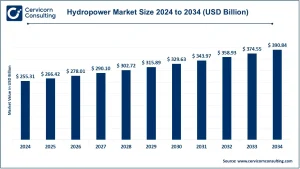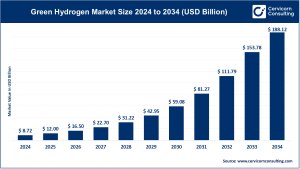Europe Green Hydrogen Market Overview
The Europe Green Hydrogen Market is witnessing accelerated momentum as the continent pushes forward with its commitments to achieve carbon neutrality and strengthen energy independence. Green hydrogen—produced via electrolysis using renewable energy sources—is increasingly positioned as a vital pillar in Europe’s clean energy transformation. Over the coming decade, the market is expected to expand significantly, propelled by bold EU climate goals, large-scale infrastructure developments, and rising capital flows from both government bodies and private investors. Applications are broadening across mobility, industrial raw materials, and energy storage, marking the transition from demonstration projects to full-scale commercial deployment.
Key Market Trends
Expansion of Electrolyzer Capacity
Europe is at the forefront of global electrolyzer deployment, with large-scale initiatives progressing in Germany, the Netherlands, Spain, and Nordic countries. Projects exceeding 100 MW capacity highlight the shift from experimental setups to mainstream production.
Strong Policy and Financial Backing
EU programs such as Fit for 55 and REPowerEU are acting as catalysts for hydrogen adoption. Incentive mechanisms—including subsidies, carbon contracts for difference (CCfDs), and cross-border infrastructure like the Hydrogen Backbone—are strengthening investor trust and market confidence.
Integration with Heavy Industry
Carbon-intensive sectors such as steel, cement, and chemicals are leading in early adoption. For instance, German steel producers are piloting green hydrogen in direct reduction of iron (DRI) processes to phase out coal usage.
Cross-Border Trade and Infrastructure Growth
European states are working collectively on hydrogen transport pipelines and storage facilities to establish a unified energy market. The European Hydrogen Backbone is a flagship project aimed at enabling cross-border hydrogen distribution.
Hydrogen in Transportation
Adoption is extending into mobility, with hydrogen-powered buses, trucks, and trains already piloted in France and Germany. The aviation and maritime sectors are also exploring synthetic fuels derived from hydrogen as part of their decarbonization roadmaps.
Market Drivers
-
Government Investments
Europe has committed more than €400 billion toward hydrogen-related projects by 2030, supported by national hydrogen roadmaps. -
Ambitious Climate Targets
The EU’s target of producing 10 million tonnes of renewable hydrogen annually by 2030 aims to replace fossil-based hydrogen in refining, ammonia manufacturing, and other industrial processes. -
Renewable Energy Growth
The rapid expansion of wind and solar power across Europe provides a strong base for renewable-powered electrolysis. Offshore wind projects in the North Sea are increasingly being integrated with hydrogen hubs. -
Energy Security Considerations
The Russia-Ukraine conflict has accelerated Europe’s pivot away from natural gas, positioning green hydrogen as a vital strategy for reducing reliance on imported fossil fuels. -
Technological Improvements
With electrolyzer costs projected to fall by 60–70% by 2030 and efficiency enhancements underway, green hydrogen is becoming progressively competitive with conventional hydrogen sources.
Impact of Trends and Drivers
-
Regional Landscape: Northern and Western Europe—particularly Germany, the Netherlands, and Denmark—are emerging as central production hubs, while Southern nations such as Spain and Portugal benefit from abundant solar resources that lower production costs.
-
Sectoral Uptake: Industrial usage, notably in steel and chemicals, is expected to lead short-term demand. Longer term, the transport and energy sectors will scale up their adoption.
-
Cross-Border Dynamics: Expanding hydrogen trade will redefine Europe’s energy network, with pipelines connecting renewable-rich regions to heavy industrial demand centers.
Challenges & Opportunities
-
Challenges: High production costs, insufficient infrastructure, and uncertainties around sustained subsidies are key obstacles.
-
Opportunities: Europe’s early-mover advantage in innovation, regulatory frameworks, and infrastructure investment could secure its leadership position in the global green hydrogen economy, as well as open pathways for technology exports.
Future Outlook
The Europe Green Hydrogen Market is forecast to grow at a robust double-digit CAGR through 2034. By 2034, the region is expected to contribute a substantial portion of the world’s hydrogen production capacity, with the market value anticipated to reach several hundred billion euros. As renewable capacity expands and electrolyzer costs decline, green hydrogen will gain cost parity with gray hydrogen, paving the way for mass adoption across industrial, mobility, and energy sectors.
📩 Contact Us for a detailed overview and customized insights.


